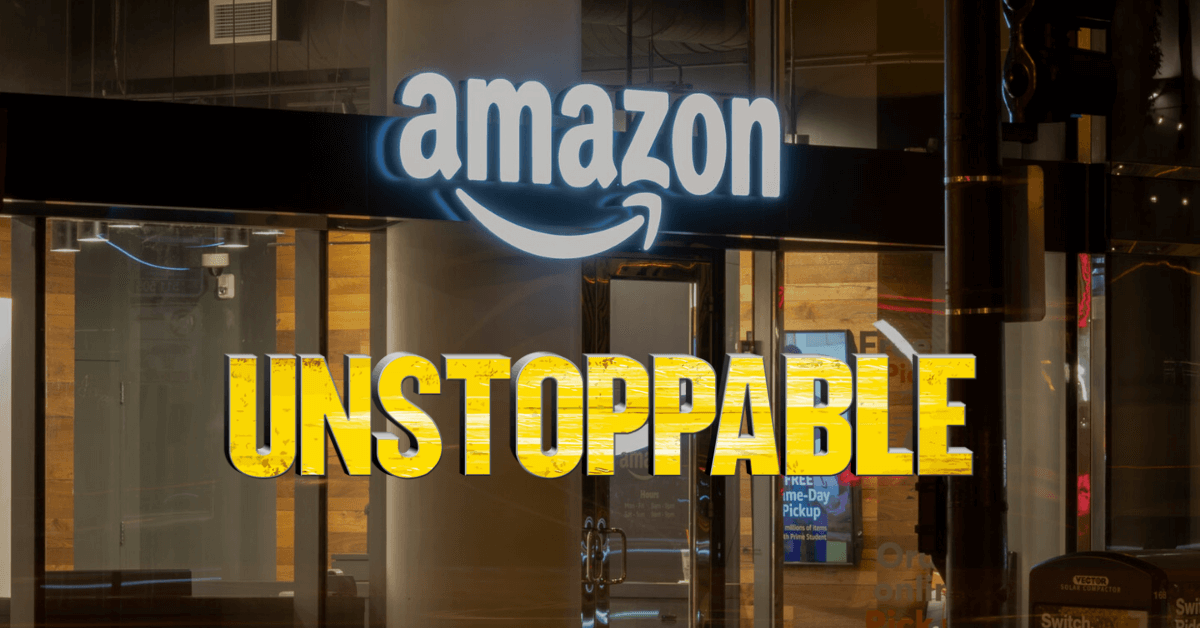
What Difference Does A Decade Make!
Ten years ago, Seattle was ALL about Microsoft. Amazon, in those times, was a little more than a blip on the map. Just a growing dot-com startup operating in a former VA hospital downtown!
Fast forward to today. With $280.5 billion in sales revenue in 2019, Amazon has become the most influential company in retail and tech. Globally, it has garnered a powerful position, penetrated numerous domains, creating ripples of change and slowly taking over. And, it’s still growing, hard at work to improve itself.
Such growth has ruffled many feathers. Amazon has persisted, nevertheless.
However, there is a cost to being the world’s most customer-centric yet innovative company with a decent profit margin. In light of the transforming IT realm, America’s political dynamics, and Amazon’s global presence, change is inevitable. That’s where an online seller needs to be proactive to glean profits from this eCommerce Titan.
So, if you are still worrying about Amazon product data upload, multi-channel selling, or catalog optimization, get ready to realign your focus. Take a look at the biggest challenges for Amazon sellers in 2020.
Amazon Is An Unstoppable Force, So Get On That Wagon
As a multinational technology and retail company, Amazon has reached a unique status.
- In 2019, Amazon accounted for 52.4% of the United States retail eCommerce market
- The company announced a 21% hike in net sales in the fourth quarter of last year
- Since 2014, its profits and operating income are on a steady rise
- Amazon is the second-largest private employer in the US with 750,000 full-time workers
- Its technical investments like cloud, Alexa AI, and drone shipping, etc. are leaving other tech companies behind
- Google is losing search audience and advertising dollars to the retail giant
- Mimicking Amazon’s robust shipping operations and logistics network is a backbreaking challenge
Amazon’s continually changing features always come with a new breed of challenges. It has already championed many markets & domains at a pace that leaves sellers panting in its wake. So, you must match up to its standards and be prepared in advance.
3 Challenges Amazon Sellers Should Look Out For
1. Frequent Operational Changes
Amazon is known for riding promising trends to maintain its growth momentum. But, as it continues to scale its operations, problems can arise if-
- Sellers can’t keep up with the new features and risk factors
- Amazon fails to manage the growth effectively
Keep in mind that Amazon has time and again proven capable of balancing its endeavors and their outcomes. For instance, when the company announced its takeover of Whole Foods Market in 2017, the news was nothing short of a thunderclap. Two years later, through slashed prices, discounts, and a broad range of options, Amazon turned the deal into a winner.
While not exactly groundbreaking, the Whole Foods example shows that Amazon has managed its scaling just fine so far. That leaves you, i.e., the seller, to catch up. For now, here’s what you can do-
- Optimize for mobile
- Use technology to keep store visitors engaged
- Rethink sales and engagement strategies
- Utilize analytics to understand consumer behavior
- Experiment with pricing to optimize sales
Remember, you need to do it all. So, enlist some help. For instance, you can always hire product data entry specialists to manage your eStore listings. If need be, use eCommerce copywriting services for engaging content that can convert customers.
Since these are time-taking tasks that are critical to getting a good ranking on Amazon, it’s better to outsource. That’s because understanding Amazon’s changing model and adapting accordingly is more important for you. So, direct your attention to strategizing.
2. Data Optimization & Order Fulfilment
Data optimization is a matter of concern for any eRetailer trying to grow their store on Amazon. A decade ago, data was still recognized but not banked on as much as it should. Now, eStores regularly use customer, inventory, and sales data to uncover actionable insights & create revenue-generating strategies.
The overall online selling system is simpler in part because gleaning relevant information from data is less complicated and more focused. In parallel, if businesses do not utilize data adequately or fail to build a robust fulfillment system, losses follow.
Especially on a platform that values good customer experiences above everything else, the result of inadequate order fulfillment can be drastic.
- The inventory will suffer
- The seller’s reputation will decline
- Costs will increase
- The number of returns will rise
- Overhead expenses will go up
Inventory optimization, however, is just a part of the entire solution. You need to take care of a few more aspects-
- Consistent inventory
- Lower shipping costs
- Lower turnaround time
- Happy & satisfied buyers
On this voyage, online retailers have a lot to gain from automation. It can help interpret data effectively and intelligently, streamlining the entire order fulfillment process.
For instance, machine learning can help create intelligent responses to a buyer’s searches. Artificial intelligence can take care of basic customer service chores. Automation, combined with expert human help, can help implement content and email marketing campaigns that can convert customers. At the same time, it can be used to handle fast fulfillment and reduce wait times.
Example-
Hire Amazon product catalogs editing services to optimize the content for your eStore. Feed them with consumer insights and guide them to create effective listing content. In this approach, you’ll save time, money, and extra effort.
If combined, these technologies can help you in designing personalized experiences. Utilize them to stay ahead of the curve.
3. Global Expansion
Amazon is in no mood to curb its plans for international expansion. On the one hand, it’s excellent news for sellers because you get exposure to new markets. On the other hand, it’s troublesome because every new market comes with varying degrees of risks and vulnerabilities.
Additionally, establishing international operations is expensive. Despite the backing of Amazon’s logistics network, you will still need to foot the cost for the fulfillment, advertising, promotion, etc. Then, there are other things to consider, like-
- The regions’ political and economic constraints
- Cultural differences
- Currency value
- Exchange processes
- Government regulations for eCommerce
- Language restrictions
Here’s a typical example that might help you visualize this conundrum in a better way.
Let’s suppose your eStore operates in the US, India, and the UK websites of Amazon. You hire eCommerce copywriting services to optimize your product listings. Now, they must consider the language restrictions for all three nations. They must update prices using the right currency. They must understand the customer expectations for each region before designing a copy that can work.
In simple words, Amazon’s plans for global expansion pose a strange challenge for online retailers. You have to maintain consistency and design profitable campaigns at the same time.
How do you do that?
- Reach customers through as many touchpoints as possible
- Practice multi-channel marketing
- Design seamless customer journeys
- Use technology to overcome regional barriers, like using multi-lingual chatbots for necessary customer support
- Take advantage of seasonal changes and utilize varying demand cycles in different regions to maintain year-long profits
- Revamp your product catalog for different regions
- Utilize analytics to understand different customer behaviors
Of course, don’t go in headfirst. Plan well in advance. Familiarize yourself with the locale. While Amazon is there to back its sellers, you must also get a good idea of the region you’re getting into. Hire product data entry specialists to create listings that resonate with the targeted audience. Conduct market research. Figure out ways to secure profits.
Stay Prepared For Amazon’s Upcoming Changes & Success Will Follow
For the last decade, Amazon has worked hard to build an online selling ecosystem that’s resilient, stable, and robust. The result is a platform bubbling with opportunities for those who understand online retail and are willing to take calculated risks.
However, there are no guarantees in eCommerce. Amazon is a business, just like your online store. It will secure its profits, so you must do the same for your eStore. Therefore, stay ahead of the rest and pick up on even the faintest disruptions. Being proactive will help you stay afloat and active in the global retail landscape for a long time.
Scale Your Amazon Store With Professionals
QuikTek Info offers a comprehensive suite of Amazon product catalogs editing services. Our eCommerce copywriting services work in tandem with your business goals. Your success is our prime objective. Hire our product data entry specialists to get accurate, unique, and creative listing content, optimized for your audiences.
Let us handle Amazon product data upload for your eStore while you focus on staying up-to-date with Amazon. Reach us at mail@quiktekinfo.com.






